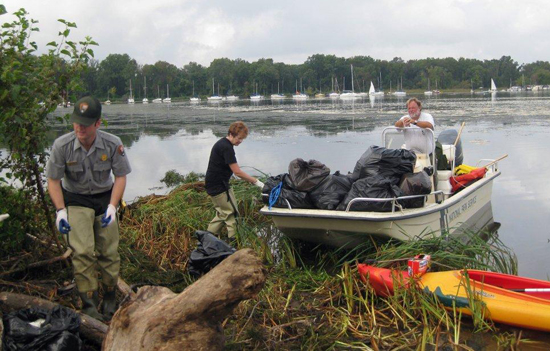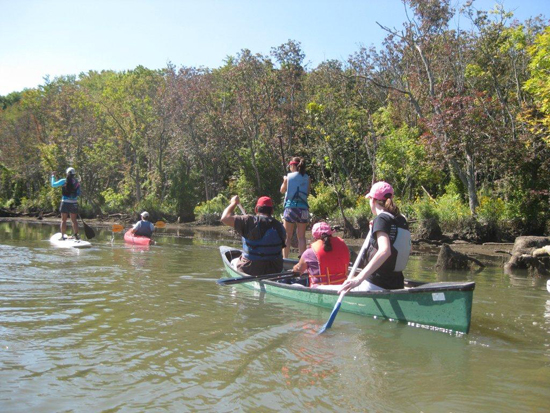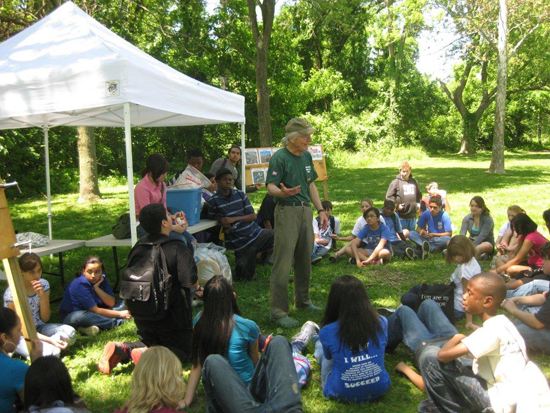Watershed Wednesday: Friends of Dyke Marsh (Alexandria, Va.)
The nonprofit Friends of Dyke Marsh helps preserve, restore and celebrate this rare Potomac River ecosystem.
Every Sunday morning at 8, a handful of bird enthusiasts flock to Dyke Marsh, the only freshwater marsh along the upper tidal Potomac River. The Dyke Marsh Wildlife Preserve, located south of Alexandria, Va., is home to almost 300 species of birds. The marsh is classified as a “globally rare” habitat, one that’s particularly unique in this dense, urban area just outside the nation’s capital.

(Image courtesy of Friends of Dyke Marsh)
Since 1975, the nonprofit volunteer group Friends of Dyke Marsh (FODM) has helped preserve, restore and celebrate this rare ecosystem. In addition to arranging weekly bird watching trips, FODM sponsors scientific surveys, leads school groups, removes invasive plants, organizes cleanups and builds public appreciation for the marsh.
Understanding and protecting natural resources
FODM supports scientific surveys that illustrate the marsh’s irreplaceable habitat. Freshwater tidal marshes are flooded with fresh water with each incoming high tide, and include a variety of rare emergent grasses and sedges rather than shrubs.
“Dyke Marsh is a remnant of the extensive tidal wetlands that used to line the Potomac River,” explains FODM president Glenda Booth. “It provides buffering during storms. It absorbs flood waters. It’s a nursery for fish. It’s a rich biodiverse area in a large metropolitan area. We think it’s important to preserve what little is left.”
With the support of FODM, a Virginia Natural Heritage Program employee completed a survey of dragonflies and damselflies on the preserve in spring 2011. In addition, members conduct a breeding bird survey every spring. Last year, FODM recorded 78 species. The highlight? A confirmed breeding eastern screech-owl, the first documented in 20 years.

(Image courtesy of Friends of Dyke Marsh)
Is it too late for Dyke Marsh?
Dyke Marsh faces significant threats from climate change and sea level rise. The marsh is disappearing at a rate of 6-8 feet per year, according to a 2010 U.S. Geological Survey study.
“Our biggest challenge is to stop that erosion and restore Dyke Marsh,” says Booth.
Dyke Marsh was already destabilized in 1959, when Congress added it to the U.S. National Park system. USGS scientists largely attributed this to human impacts: sand and gravel mining that gouged out substantial parts of the marsh and removed a promontory that protected the wetland from storms, leaving Dyke Marsh exposed and vulnerable.
FODM works with the National Park Service to enhance wetland habitat and slow erosion of the marsh’s shoreline.
Spreading the word
Educating neighbors about their connection to Dyke Marsh and fostering appreciation of this scenic area are also essential components of FODM’s preservation goals.

(Image courtesy of Friends of Dyke Marsh)
Like most other parts of the Chesapeake Bay watershed, invasive plants are a problem in Dyke Marsh. “A lot of people plant things that are aggressive and not native, and these plants end up in the marsh.” And pollution that flows into streams throughout Fairfax County eventually empties into Dyke Marsh, threatening its wildlife and habitat.
Preserving Dyke Marsh is a goal that extends beyond the marsh itself, according to Booth. “We have to make sure that activities on our boundaries are compatible with preservation goals.” That means advocating for regulations that prohibit jet skiing, which disturbs the marsh’s nesting birds in spring.
Visit FODM’s website to learn more about upcoming outreach and educational opportunities and to find out other ways you can enjoy Dyke Marsh.

Comments
There are no comments.
Thank you!
Your comment has been received. Before it can be published, the comment will be reviewed by our team to ensure it adheres with our rules of engagement.
Back to recent stories